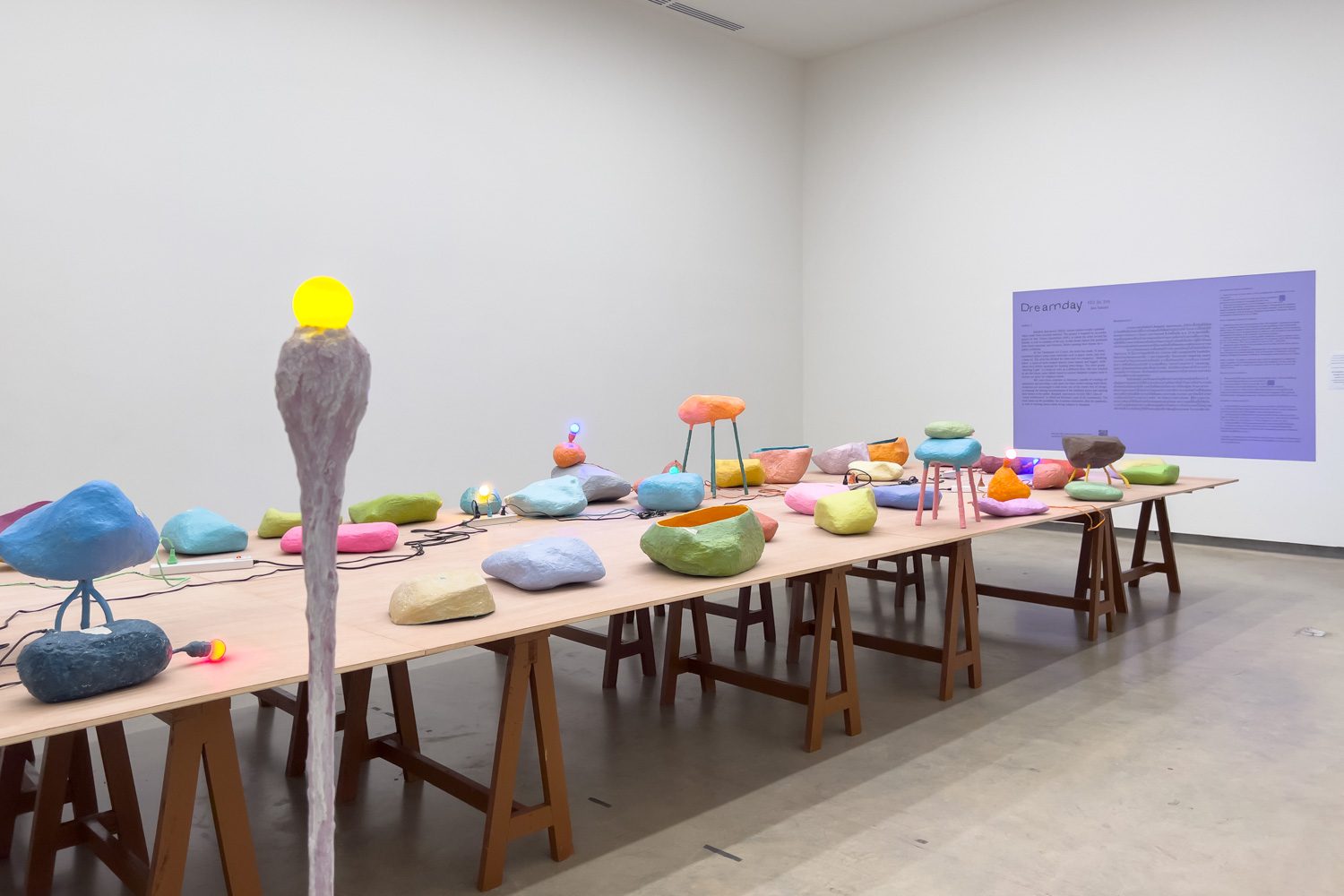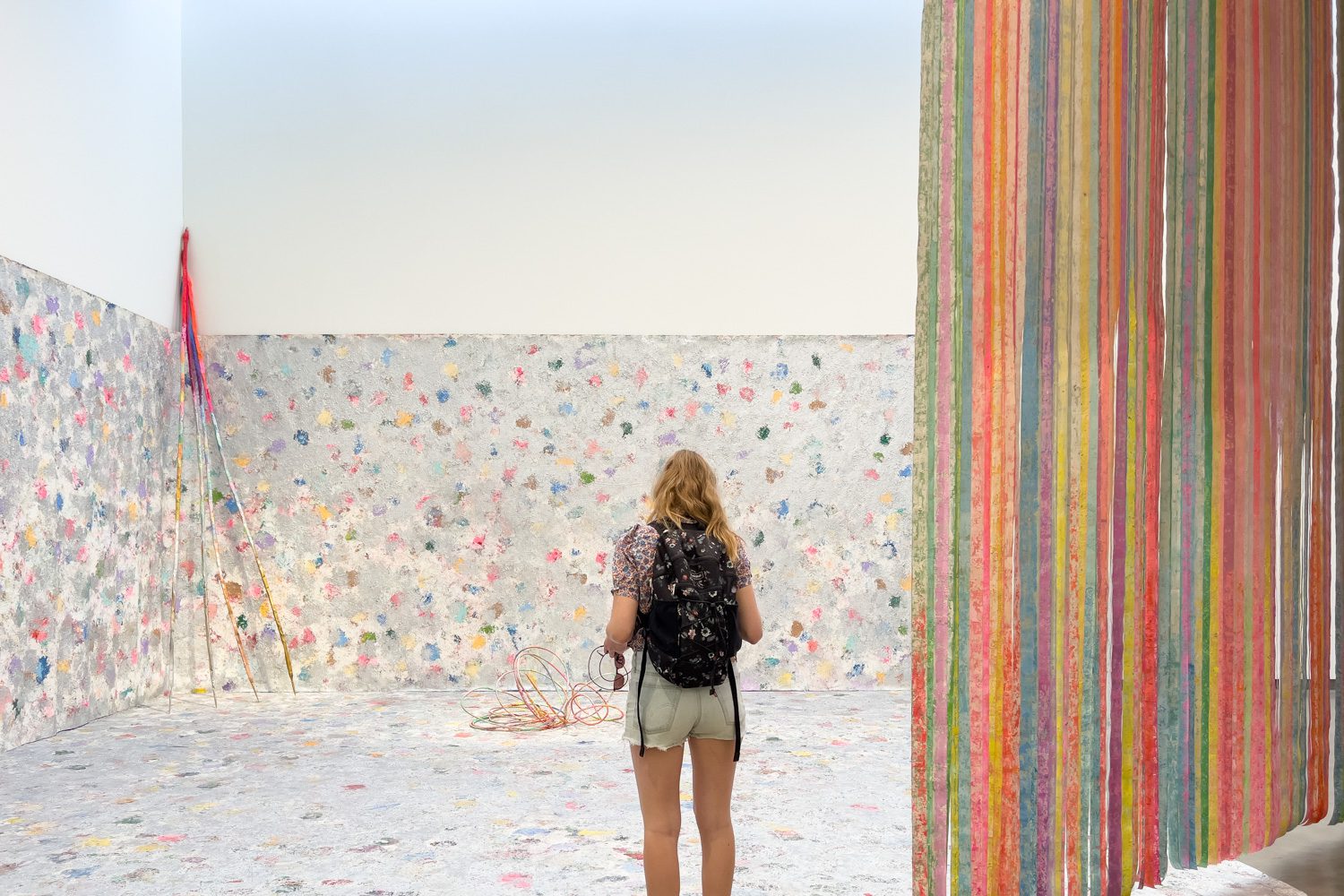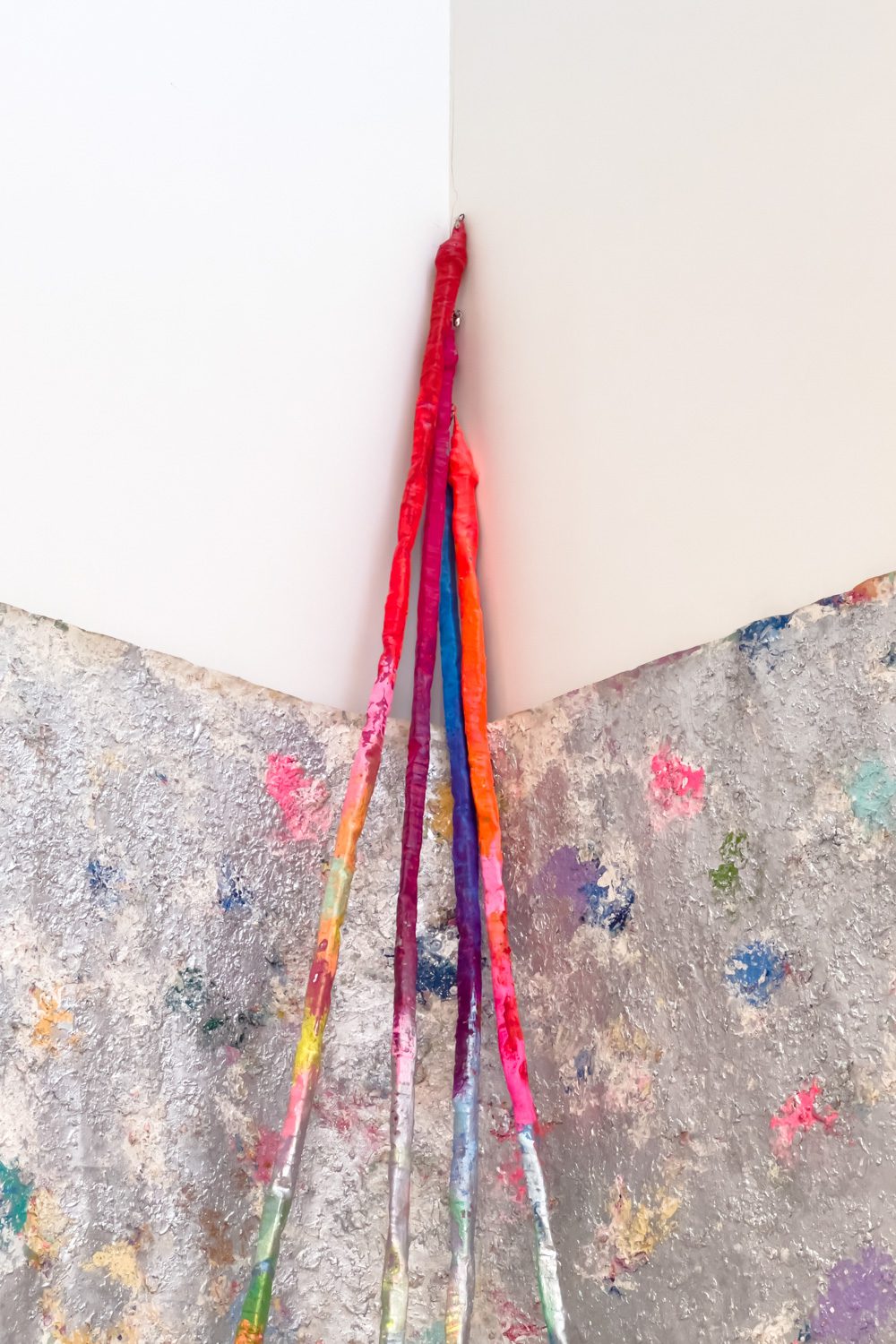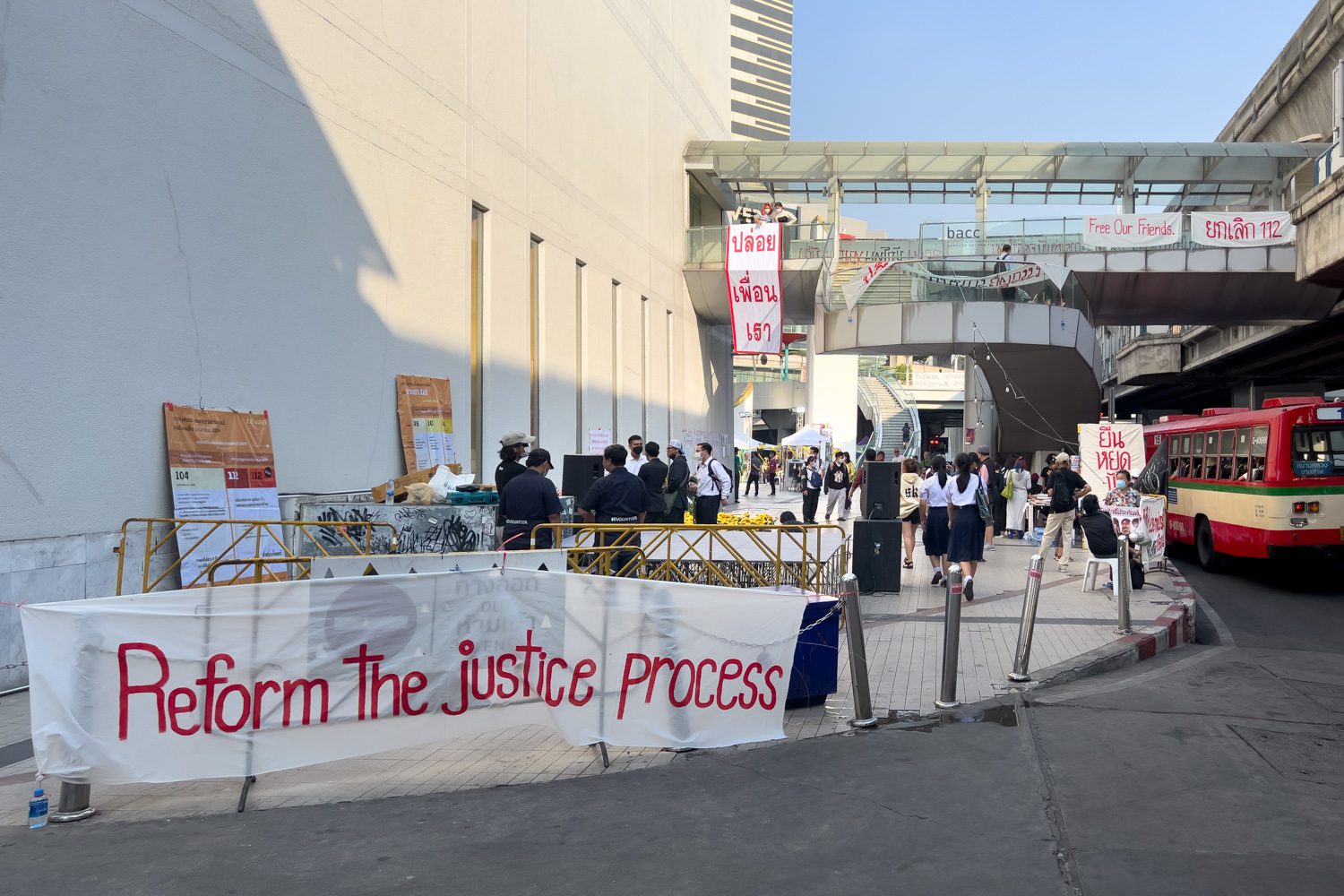AN EXHIBITION BY MIT JAI INN WHERE THE COLOR IS EXTENDED INTO THE IDEA OF BUDDHISM, HIS CONNECTION WITH NORTHERN THAI CULTURE, AND THAI POLITICS WHICH ARE STILL TRAPPED IN THE VICIOUS CYCLE
TEXT: NAPAT CHARITBUTRA
PHOTO: KETSIREE WONGWAN
(For Thai, press here)
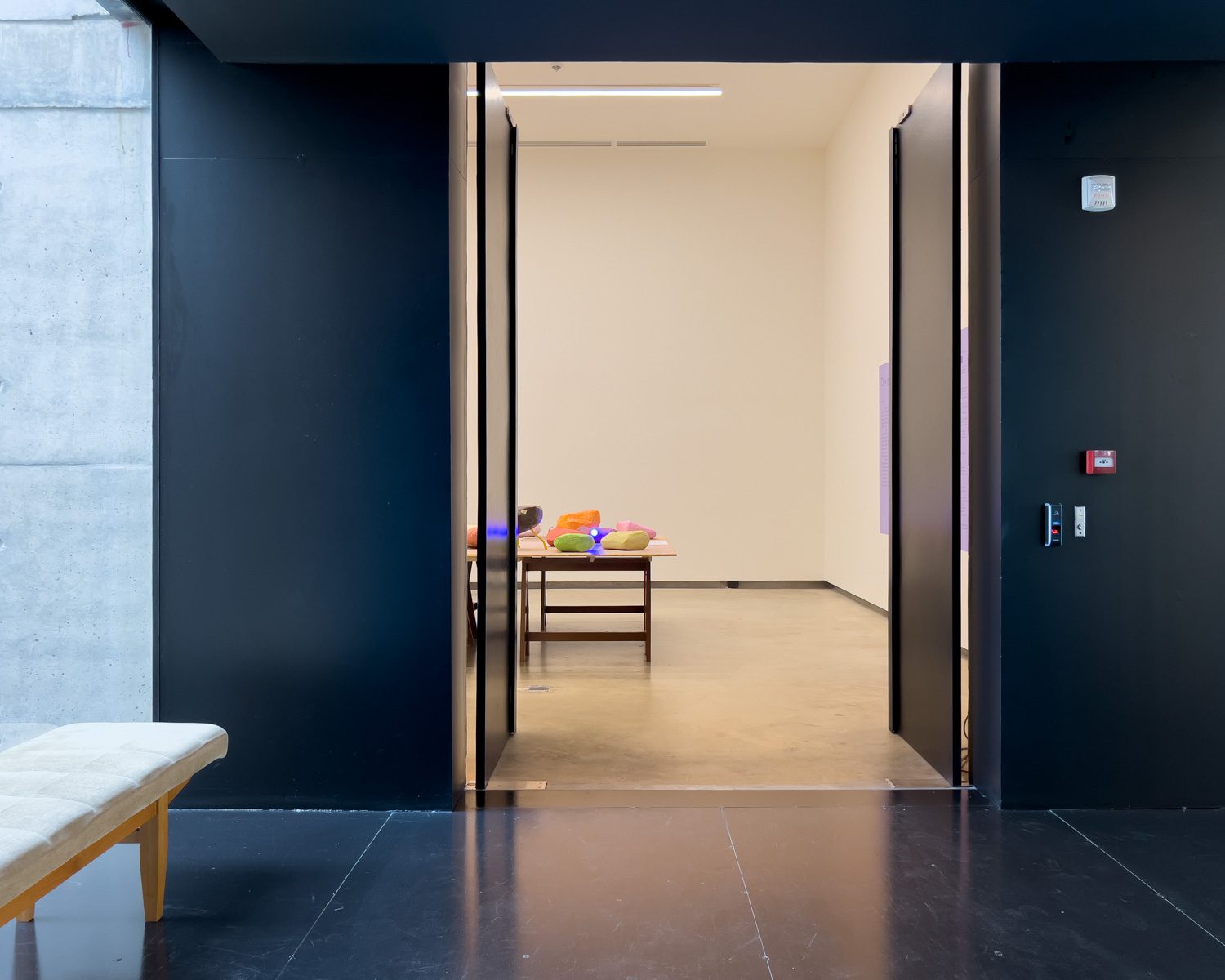
Dreamday, curated by Kittima Chareeprasit of Chiang Mai’s MAIIAM Contemporary Art Museum and Melanie Pocock of Ikon Gallery, features some of the works from Mit Jai Inn’s Dreamworld exhibition, which was held two years ago at Ikon Gallery in the United Kingdom. The works were divided into two sections: the first was displayed in the main exhibition space, while the second, titled Bangkok Apartment, 2565, contained 74 miniature-sized art pieces made of waste materials.
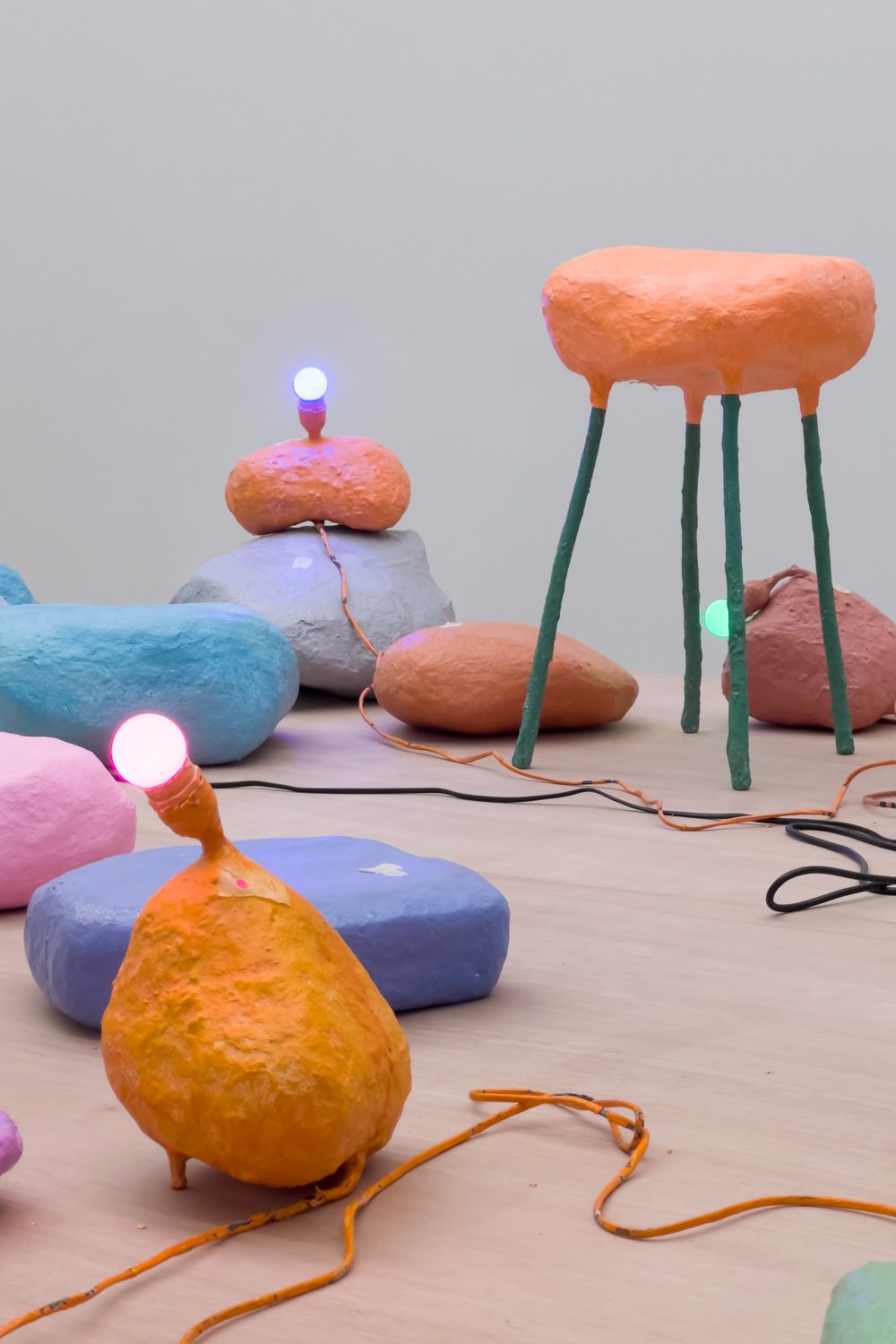
These lamps and marking stones differ from most art works in that they were created to be given away for free to viewers, with the only requirement that those who received them to display the artwork for all to see (photographs are also needed as a proof). The artist is inspired by the use of sema leaves in Buddhism to mark the location of religious ceremonies. The proliferation of these “sema art” pieces (the artist stated in an interview that he plans to make 1,000 more pieces) denotes the expansion of the frontier of Thailand’s art world.
The ideas about Buddhism are hidden behind the dreamy colors and the unrefined, elastic surfaces created by paint sprinkles in the main exhibition room. Through the wall text, the artist discusses the work process, meditation, and self-care in a world of chaos. The intention of “washing away the repressed stage and painful wound” for viewers with works such as “Dream Tunnel, 2021” is not at all overstated for the Thai audience, particularly in this day and age, in the midst of the morbid and distorted justice system.
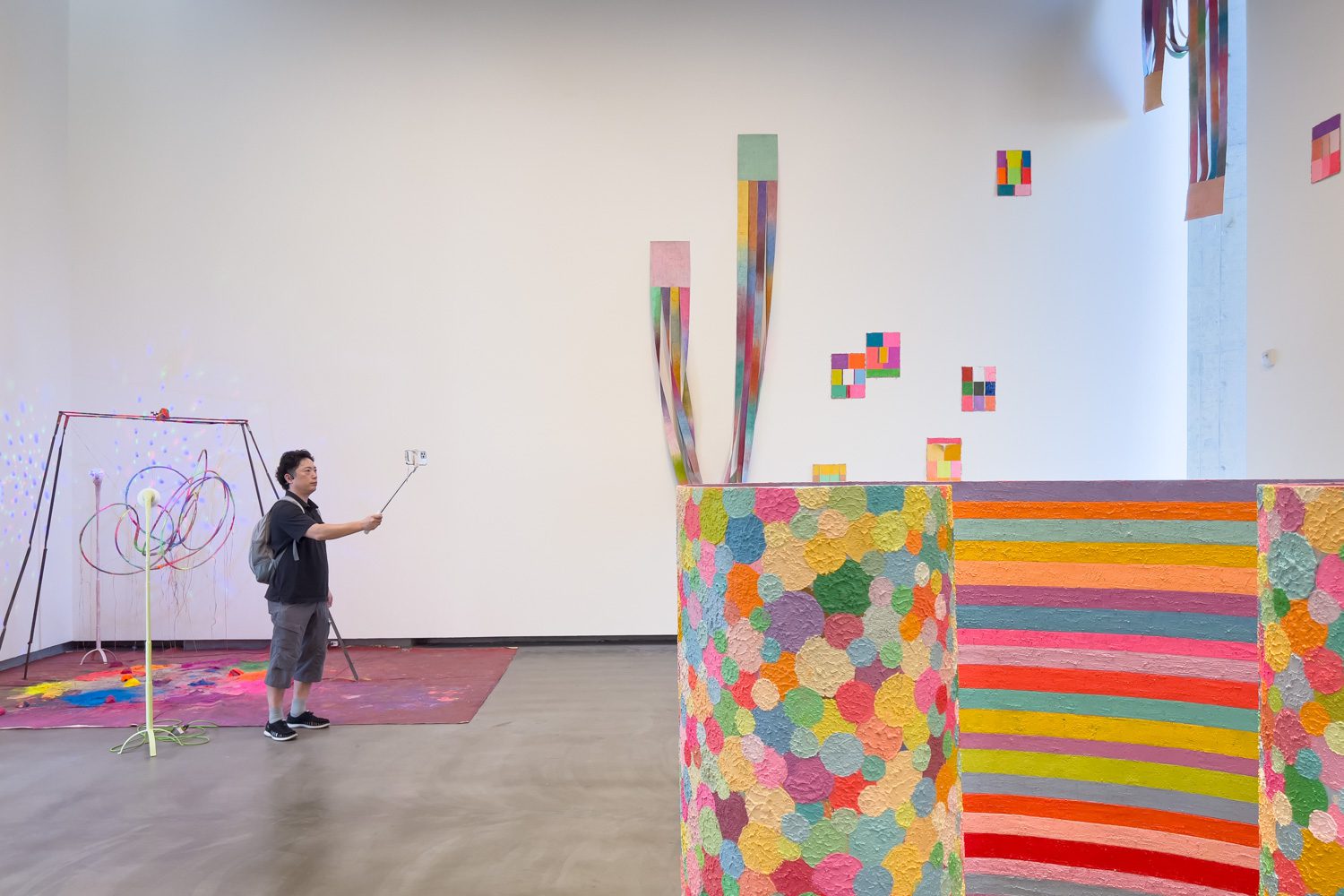
“Colors” in Mit Jai Inn’s art extends beyond Buddhism. The artist’s pastels refer to his connection with northern Thai culture and its ethnic diversity, or “colors” as materials and objects (sculptures). But, when we consider his previous works, such as Junta Monochromes, 2018 and Gallery VER’s debut exhibition in 2016 (Wett Exhibition), as well as the obscurity of contemporary art, it’s difficult to deny that the exhibition hasn’t really escaped the symbolic meanings of “colors” in Thailand’s political history and climate.


If it had been exhibited before, “colors” would have been associated with the yellow and red shirt movements. But today, the red color that came to mind was the one soaked on the bodies of Tawan and Bam, two young Thai political activists who give up their freedom for injustice—something above and beyond politics.
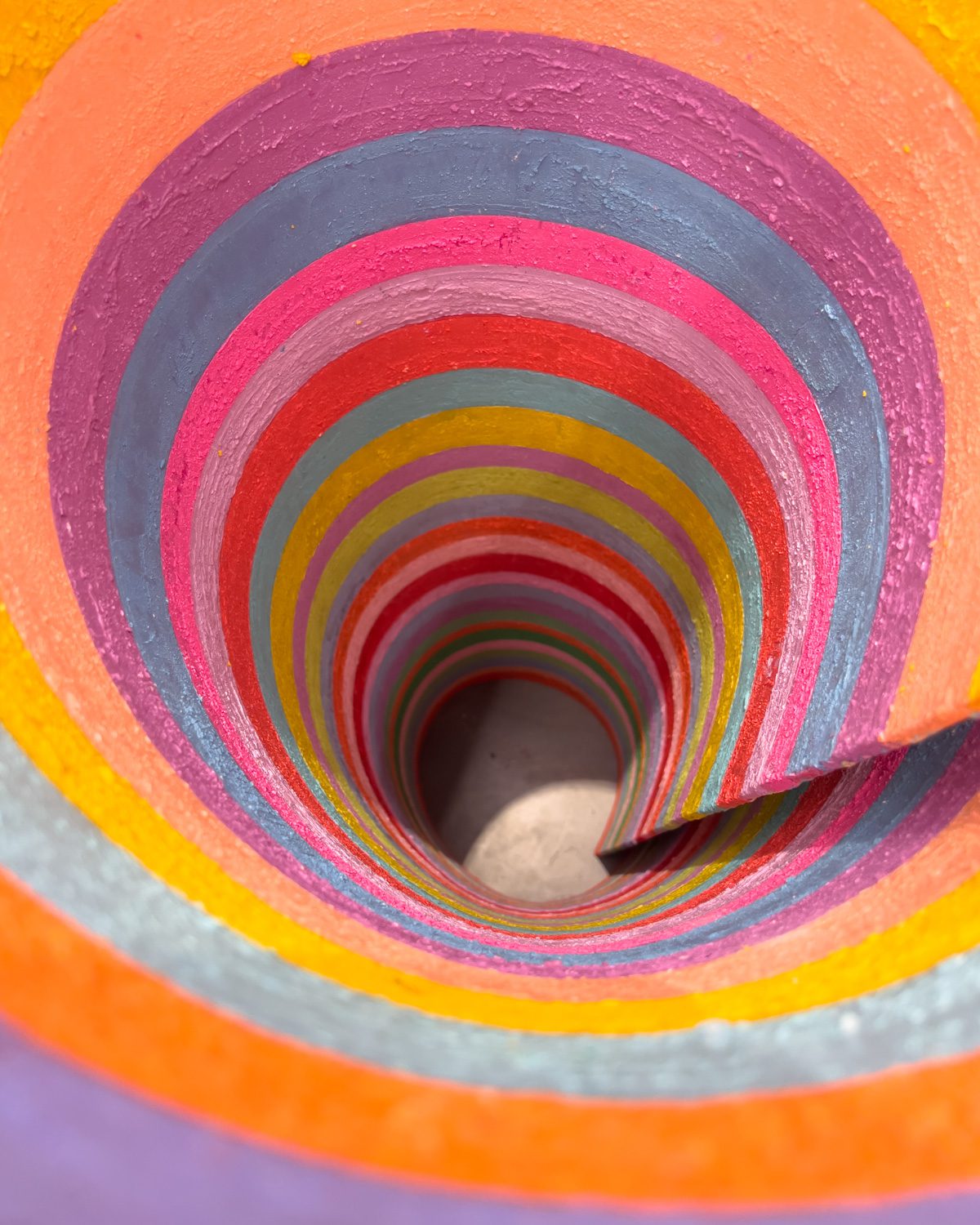
The Dreamday exhibition encourages visitors to imagine better days, but every time art is used (photographed) as a cool background for pictures that people upload on their social media accounts, it’s a confirmation that Thai society is still trapped in the same old problematic cycle, just like the endless loop of colors at the center of Untitled (Scroll), 2021, which is installed in the middle of the exhibition room.

Mit Jai Inn’s Dreamday is now showing at the Jim Thompson Art Center until February 28th, 2023. This article was written on the last day of the rally “112 hours standing, stop the unjust imprisonment, free our friends” in front of the Bangkok Art and Culture Center on January 26th, 2023. Hopefully, the good news will arrive before the end of the exhibition.



